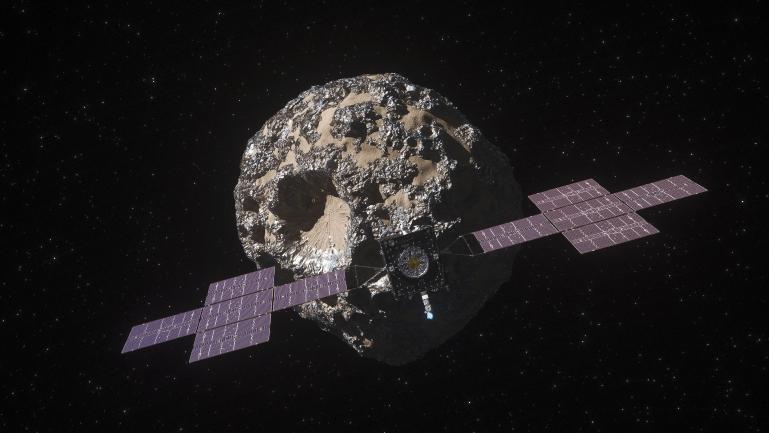
NASA’s Psyche mission is a journey to a unique metal-rich asteroid – also named Psyche, after the goddess of the soul in ancient Greek mythology. The asteroid Psyche orbits the Sun between Mars and Jupiter and is unique in that it appears to be part or all of the iron-rich interior of a planetesimal, an early planetary building block of our solar system.
One of Psyche’s mission goals is to understand iron cores, a previously unexplored component of planet formation.
Deep within rocky, terrestrial planets – including Earth – scientists infer the presence of metallic cores, which lie unreachably far below the planets’ rocky mantles and crusts. Because we can’t see or measure Earth’s core directly, Psyche offers a unique opportunity to meet another mission goal of learning more about the violent history of collisions and accretion – the coming together of matter under the influence of gravitation to form larger bodies – that created terrestrial planets like ours.
The Psyche mission has the following science objectives:
- Determine whether Psyche is a core, or if it is unmelted material
- Determine the relative ages of regions of Psyche’s surface
- Determine whether small metal bodies incorporate the same light elements as are expected in the Earth’s high-pressure core
- Determine whether Psyche was formed under conditions more oxidizing or more reducing than Earth’s core
- Characterize Psyche’s morphology by measuring its topography
The Psyche mission is led by a team from Arizona State University. NASA’s Jet Propulsion Laboratory in Southern California is responsible for mission management, operations, and navigation.
NASA’s Launch Services Program (LSP), based at Kennedy Space Center, is responsible for the insight and approval of the launch vehicle and manages the launch service for the Psyche mission. LSP certified the SpaceX Falcon Heavy rocket for use with the agency’s most complex and highest priority missions in early 2023 at the conclusion of a 2.5-year effort.
The spacecraft’s solar-electric propulsion chassis was built by Maxar Technologies in Palo Alto, California. It has a payload that includes two imagers, two magnetometers, and a gamma-ray and neutron spectrometer.
Liftoff is targeted for 10:19 a.m. EDT on a SpaceX Falcon Heavy rocket from historic Launch Complex 39A at the Kennedy Space Center.
